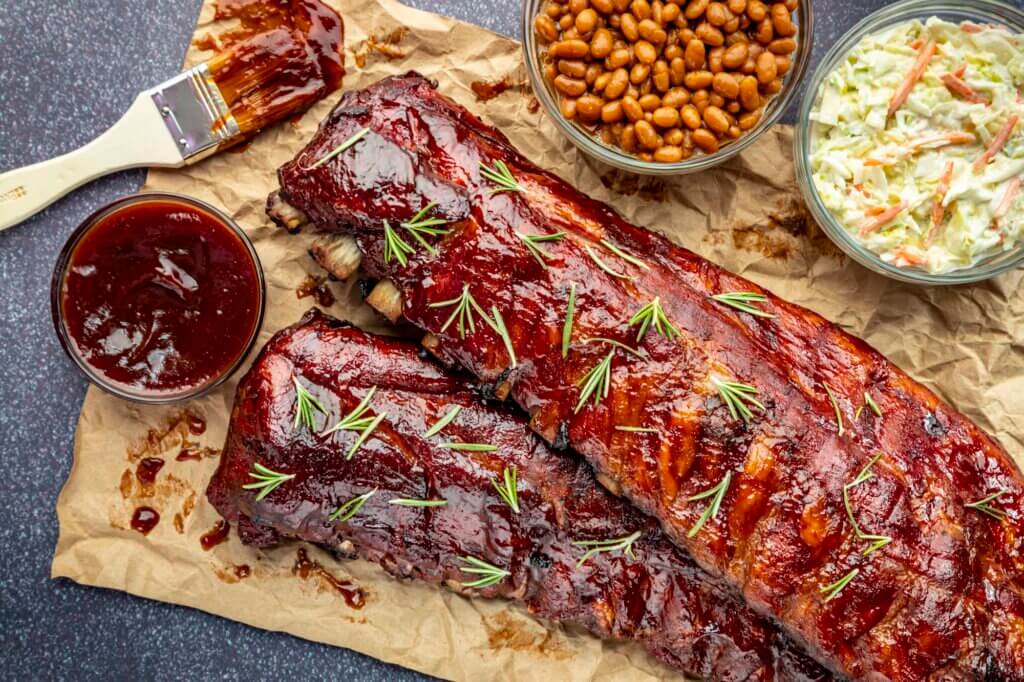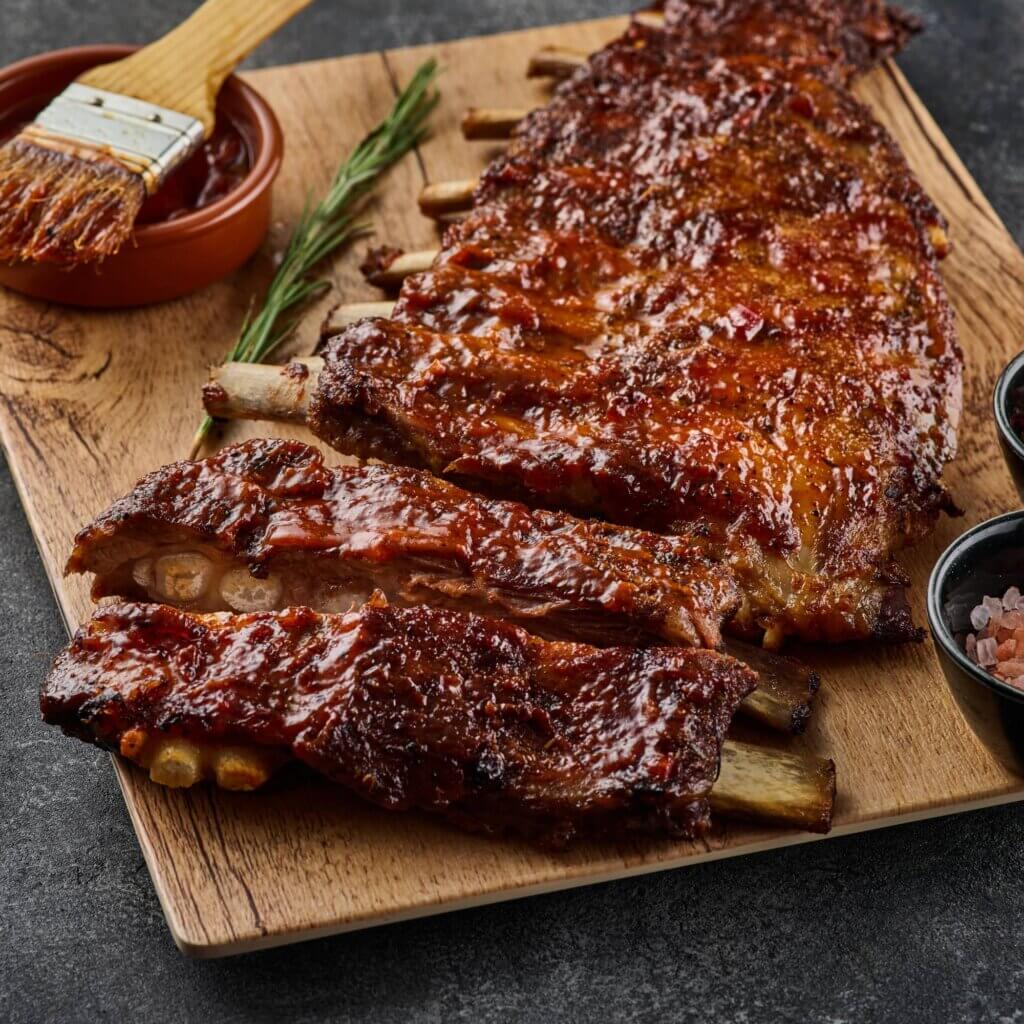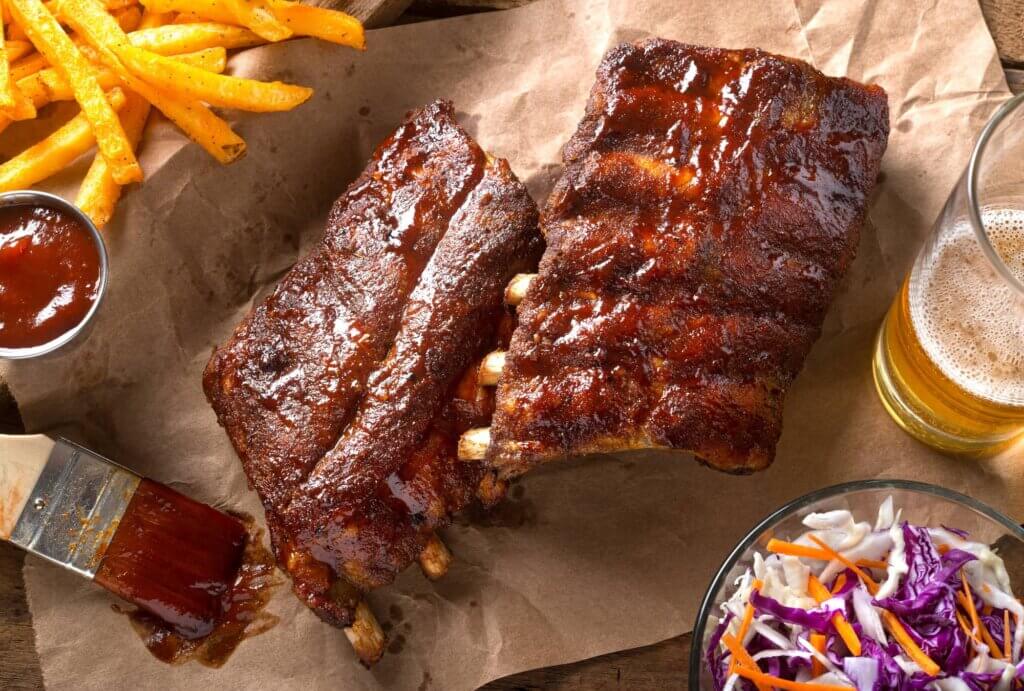
Ribs are the ultimate backyard barbecue food. When done right, they’re tender, juicy, fun to eat, and packed with great flavor. But whether you’re shopping for beef or pork ribs, you’ve got to choose between the two main types before making your purchase.
You’ll find spare ribs and baby back ribs sharing the same cooler at most grocery stores and butcher shops. Understanding the differences between the two will help you make the right choice for your next cookout.
What are Spare Ribs?
The spare ribs come from the belly of the animal and stretch up to the sides. They’re connected to the sternum with a meaty section of cartilage often removed to create rib tips. These ribs have a little more meat than the back ribs, especially when they’re pork.
They also carry a lot more fat that can help the meat stay juicy during smoking and other extended cooking processes. When they’re trimmed down, they’re known as St. Louis style ribs. Many people prefer the St. Louis style because it removes most of the fat lining the meat along the side of the ribs.

What are Baby Back Ribs?
As the name suggests, baby back ribs come from the back of the cow or pig. They offer more tender meat and a slightly less fatty chew. However, the narrowness of the cut means you’ll need to take a little more care when cooking them to avoid drying out the meat.
The bones are more curved, requiring strong tongs when flipping as well. These ribs tend to cook much faster and take less time to get on the table, making them a better choice for everyday enjoyment.

What are the Differences Between Spare Ribs vs Baby Back Ribs?
Size
As the name suggests, baby back ribs are smaller. Spare ribs are larger, both in thickness and width. Both sets of ribs can be trimmed to a similar length. If you’re only cooking for two people, stick to baby back ribs and split a rack. For a crowd, spare ribs are easily divided to provide plenty of meat for everyone. You can also cut the spare ribs into halves and cook up one portion at a time for smaller groups. Freeze the ribs you don’t plan to cook now and you can grill them up anytime over the next six months.
Appearance
Baby back ribs have a slimmer, more curved appearance. It’s clear that the meat is less fatty, although there is a layer of silverside membrane you should remove before cooking. Spare ribs are denser and contain most of the meat concentrated on one side of the rib bones.
They’re easily separated with a cleaver before or after cooking due to the thick layers of meat between the bones. If you buy untrimmed spare ribs, you’ll find extra meat and fat along the end of the ribs that you can trim off for rib tips or leave in place.
Cost
In general, spare ribs tend to cost less per pound than baby back ribs. With the right cooking method, the fatty meat becomes soft and tender while providing plenty of great beef or pork flavor. St. Louis style ribs, or trimmed spare ribs, cost a little more but still command a lower price than baby back ribs. If you prefer the texture and flavor that comes only from back ribs, you’ll likely find the price well worth the extra cost.
Flavor
Spare ribs tend to offer a richer, fattier flavor for both beef and pork varieties. The meat is heavily marbled and mixed with some cartilage. If you use a slow cooking technique, the fat and cartilage melt into the meat to increase the flavor. Baby back ribs have a less fatty flavor that is still rich and pleasant. Many people prefer the tender and more uniform texture of these ribs over the marbled texture of spare ribs.
Variety
You can simply do more with spare ribs than baby back ribs. The back ribs need specific cooking times and methods to turn out tender and flavorful. You can trim the dense meat off of spare ribs to make rib tips and riblettes, skipping the long cooking time while getting tasty results. Spare ribs also pair better with Asian flavors and alternative cooking methods than baby back ribs.
Cooking Method
For baby back ribs, you’ll want to stick to the grill or oven for the best results. You can wrap the ribs in aluminum foil for the majority of the cooking time and then finish them off exposed to the heat for a flavorful crust. Spare ribs work well for grilling, oven roasting, or smoking. The higher fat content allows them to roast or smoke slowly without drying out or losing flavor.
Conclusion
No matter which type of ribs you choose, you’ll be satisfied with your results if you choose the right barbecue sauce and cooking method. Check the fat content and marbling of the ribs you buy to better understand whether you should stick to a quicker cooking method or a slow and low technique.
Don’t forget your favorite rib accompaniments like yeast rolls, pasta salad, and creamed spinach. Choose spare ribs if you’re feeding a crowd or baby back ribs when it’s just you and a friend.

